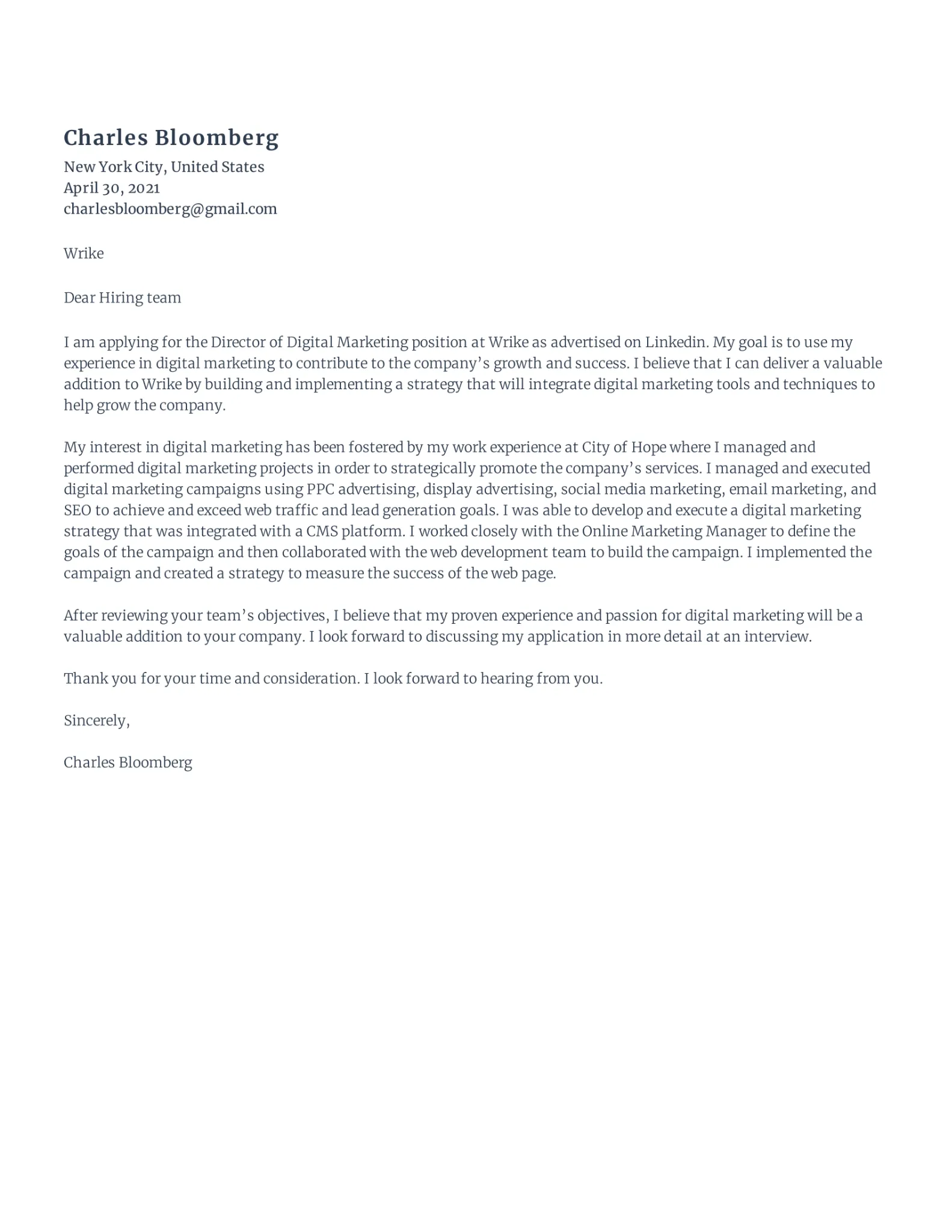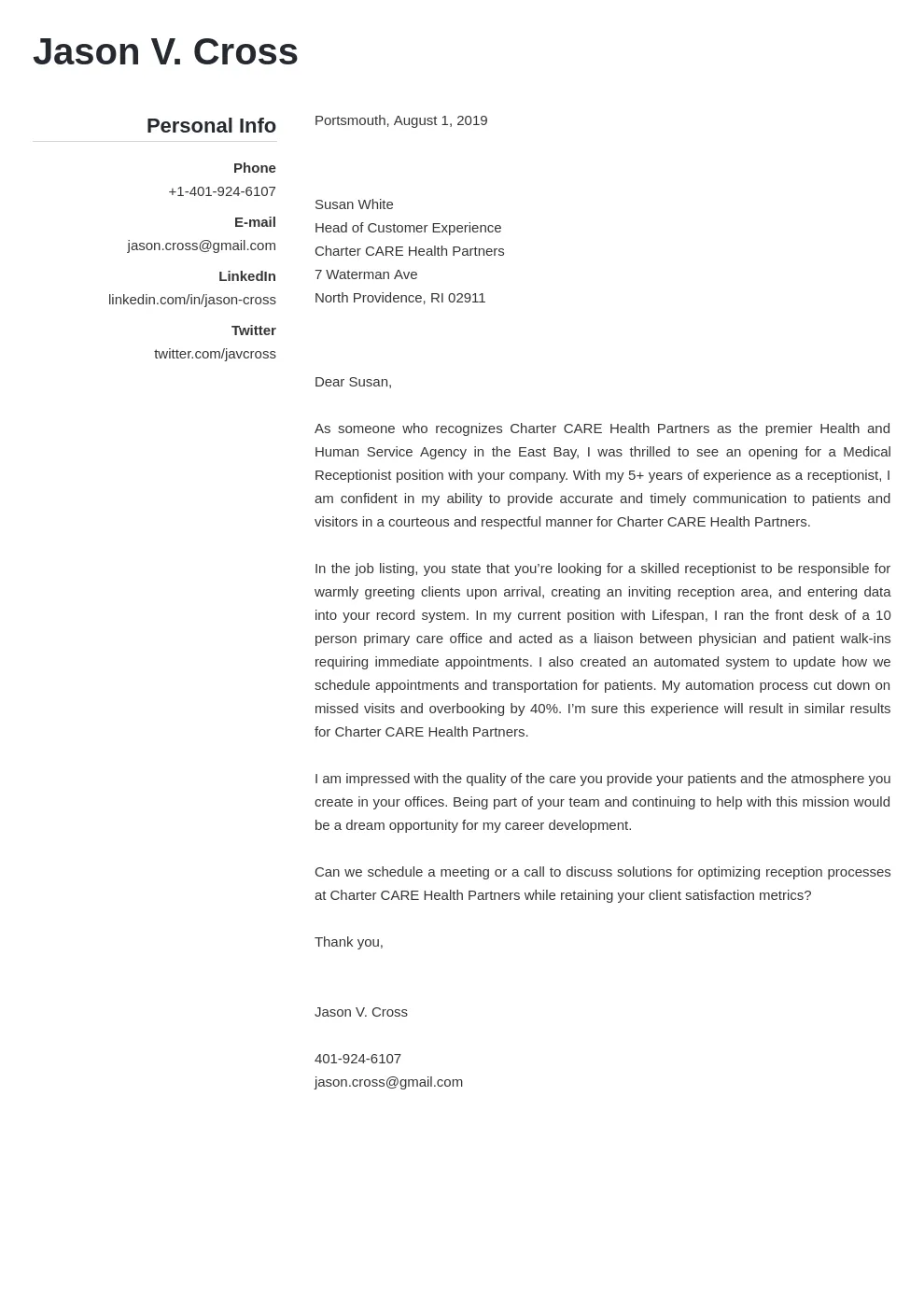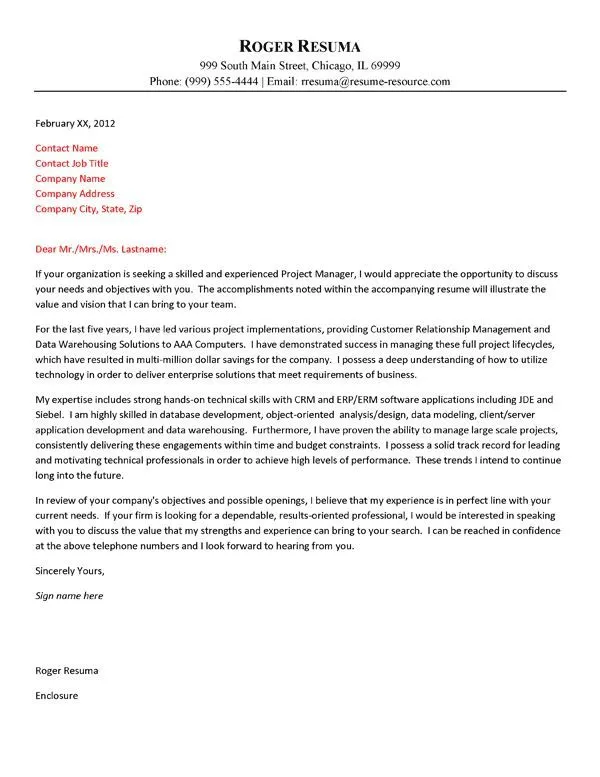Crafting a compelling cover letter is crucial when applying for jobs online, but many applicants overlook a seemingly small detail that can make a significant difference: the address. While it may seem inconsequential, properly addressing your cover letter demonstrates professionalism, attention to detail, and respect for the hiring process. This guide provides the top 5 things you need to know about addressing your cover letter to make a positive impression and increase your chances of landing an interview.
Why Cover Letter Address Matters
The way you address your cover letter sets the tone for your entire application. It’s the first thing the hiring manager sees, and it can instantly establish a sense of respect and professionalism. A well-addressed cover letter shows that you’ve taken the time to research the company and the role, indicating genuine interest. Conversely, a generic or incorrectly addressed letter can give the impression of carelessness or a lack of effort, potentially leading your application to be overlooked. Proper addressing also helps you build rapport with the hiring manager from the outset. Personalizing your cover letter by addressing the hiring manager directly creates a more engaging and effective communication style. It shows that you are not just sending out a generic application but have taken the time to understand and connect with the specific organization and role.
Identifying the Hiring Manager
Ideally, you want to address your cover letter to a specific person, usually the hiring manager or the person responsible for reviewing applications. Addressing the letter to a specific individual shows that you’ve done your homework and are genuinely interested in the opportunity. This personalization immediately makes your application stand out. But how do you find out who that is? The good news is that there are several effective methods you can use to find the right person. Let’s explore some practical approaches to identifying the hiring manager and crafting a cover letter that gets noticed.
How to Find the Right Person

Using Company Websites and LinkedIn
The company’s website and LinkedIn are invaluable resources for identifying the hiring manager. Start by visiting the company’s ‘About Us’ or ‘Team’ page on their website. Look for the department related to the job you’re applying for. Often, you’ll find names and titles of key personnel. LinkedIn is even more powerful. Search for the company and then navigate to the ‘People’ section. Filter your search by the department or the job title you’re targeting. You can then browse the profiles to find the person who is most likely responsible for hiring. Once you’ve identified a potential hiring manager, check their profile for information about their role, experience, and any connections you might share, to personalize your address further.
Checking the Job Description
Carefully review the job description for any mention of a contact person. Sometimes, the recruiter or hiring manager’s name and title will be explicitly provided. If the job description mentions a specific person, always address your cover letter to them. This demonstrates that you’ve paid close attention to the details and are following the application instructions. If a name is given, it shows that you’re engaged and serious about the position. It also helps you avoid generic greetings. Always prioritize the information provided in the job description as the primary source for identifying the appropriate recipient for your cover letter.
When No Name is Available

It’s not always possible to find a specific person’s name. In these situations, you can still address your cover letter effectively. The key is to use professional and respectful alternatives that show you’ve considered your audience.
Using General Greetings
When a specific name isn’t available, you can use general greetings that still convey respect and professionalism. These greetings are better than a generic opening like “To Whom It May Concern.” Some good options include “Dear Hiring Manager,” “Dear [Company Name] Hiring Team,” or “Dear [Department] Team.” These greetings are polite and show that you know who you’re writing to. Avoid overly casual greetings. If you cannot find a specific name, the best approach is to address the cover letter to the hiring manager or the team responsible for reviewing applications. This ensures your letter remains professional and is addressed appropriately.
Alternatives to ‘To Whom It May Concern’
While “To Whom It May Concern” has been a standard in the past, it is considered outdated and impersonal in modern applications. Using this greeting may give the impression that you have not taken the time to find out who is reading your letter. Consider using “Dear Hiring Manager” or “Dear [Department] Team.” Such alternatives are more professional and respectful, which makes them more effective in capturing the attention of the hiring manager. By avoiding such vague salutations, you demonstrate your ability to adapt to contemporary business communication and create a more positive first impression with potential employers. Always strive to use more engaging and appropriate alternatives to enhance the tone of your cover letter.
Formatting the Address

Proper formatting is essential for a polished and professional cover letter. The address should be clear, concise, and easy to read. Here’s how to format your cover letter address correctly.
Placement and Structure
Place the address at the top of your cover letter, usually on the left side. If you are sending a physical letter, include your address above the recipient’s address. If submitting online, you typically do not need to include your address. Start with the hiring manager’s name and title, followed by the company name, and then their address. If you don’t have a name, start with a general greeting, such as “Dear Hiring Manager.” Ensure that you correctly spell the recipient’s name and use the correct title. Proofread the address for any errors before submitting your application. Your cover letter will look more professional with correct formatting and structure, making the application process more efficient.
Importance of Professionalism
Maintaining professionalism in your cover letter is crucial. Always use a professional tone and avoid slang or casual language. Ensure your address is accurate and properly formatted. Professionalism in the address sets the tone for the rest of your cover letter and application. It shows respect for the company and the hiring process, which increases your chances of getting noticed. Make sure that your cover letter looks professional. Proofread everything, including your address, to ensure there are no typos or grammatical errors. Professionalism helps you make a good first impression.
Common Addressing Mistakes to Avoid

Several common mistakes can undermine your cover letter and negatively impact your chances of getting an interview. Avoiding these errors will make your application stand out and show your attention to detail.
Incorrect Titles or Names
Misspelling a hiring manager’s name or using the wrong title is a significant mistake. Always double-check the spelling of the name and title, and use appropriate titles like “Mr.”, “Ms.”, “Dr.”, or “Professor” if applicable. This shows respect and attention to detail. If you are unsure about the correct title, it’s better to omit it than to use an incorrect one. Always get the correct information before sending your application to avoid any potential errors.
Typographical Errors
Typographical errors in your address can create a negative impression. Proofread your cover letter carefully to eliminate any typos, grammatical errors, or formatting inconsistencies. Use spell-check and grammar-check tools, but don’t rely on them entirely. Always review your letter manually to ensure everything is accurate and professional. Incorrect spelling or grammatical errors in your cover letter show a lack of attention to detail. Proofreading reduces the risk of unprofessional errors that can prevent your application from standing out.
Proofreading for Accuracy

Proofreading is critical to avoid mistakes that could damage your application. Read your cover letter multiple times, both on screen and in print, to catch any errors. Ask a friend or family member to review your letter for a fresh perspective. Focus on the address, but also proofread the entire document for clarity, grammar, and style. Proofreading is one of the most important steps in the writing process, as it confirms that your message is clear, concise, and error-free. Proofreading your cover letter guarantees that all of your efforts present you professionally.
Final Thoughts on Cover Letter Addressing
Addressing your cover letter correctly is a small but important step in the job application process. By taking the time to identify the hiring manager, using professional greetings, and avoiding common mistakes, you can make a positive impression and increase your chances of landing an interview. Always remember that attention to detail, professionalism, and thoroughness can make you stand out from the crowd. Make sure to prioritize these elements to create a strong application that highlights your skills and experiences. Following these tips will significantly boost your chances of success in your job search.
